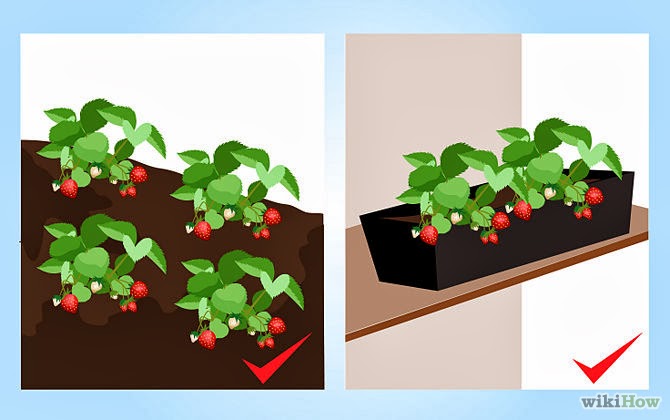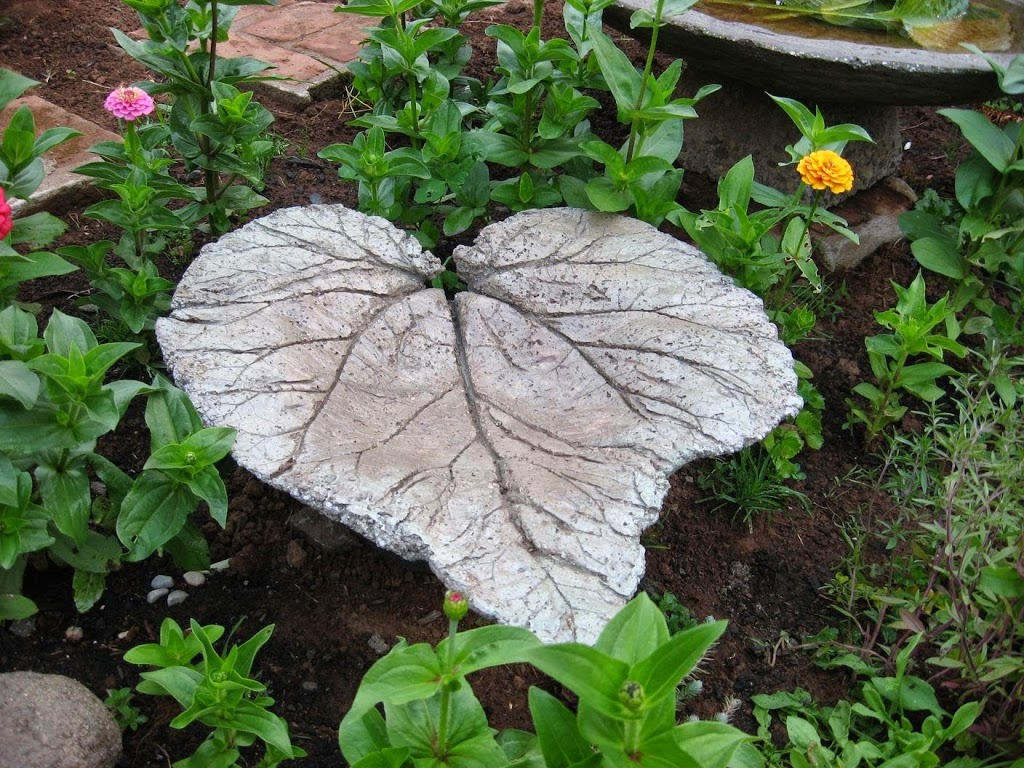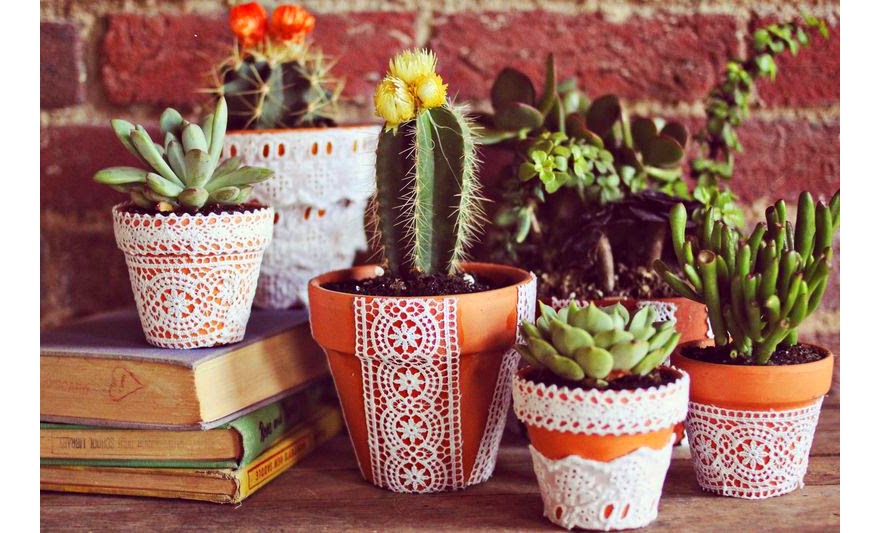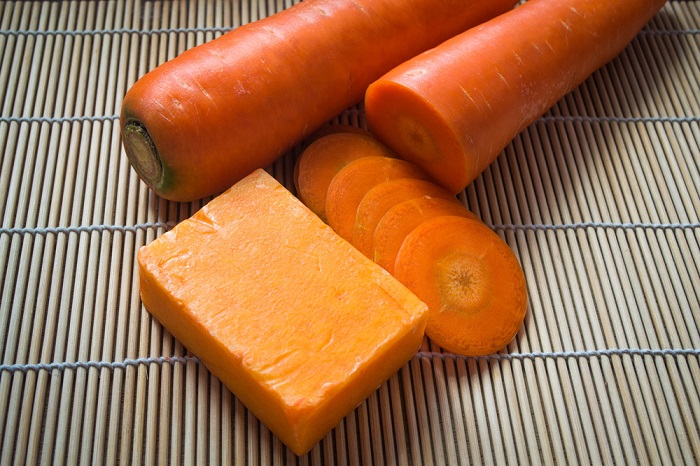Home grown strawberries are full of flavor and freshness. They can serve as food or as a decorative plant and are perfect to be grown in the garden or in containers. If you have children, they will see that strawberries are very easy to grow and that it is a very rewarding plant. There are several options for you to decide how you want to grow the strawberries, choose it according to the one that suits you best and the space available at home.

7 ways you can grow strawberries
1: Choose the strawberry variety
Establish which strawberry variety best suits your needs: There are two basic types of strawberry plants, mainly those that grow in summer and the perpetual (always have) strawberries. Summer strawberry production can break down in early, mid, or late summer.
There are many varieties in each group, and some are probably highly sought after, so ask a local plant nursery for advice. In a very general way, some of the varieties are the following:
- Strawberry is perpetually harvested: These are the most famous because they continue to bear strawberries for about 5 years. They yield a good number of strawberries a year (outdoors in temperate climates and indoors in closed containers for colder areas). Both ways will work well if you take care of them continuously.
- Early Harvest Strawberries: This plant will yield a large number of strawberries in early and mid-summer, depending on when you’ve planted it (summer crops will bear fruit about 2 months after planting). Buy this variety if you plan to cook with them and / or if you plan to freeze the harvest.
- Day-neutral strawberries: These are a lot like perpetual strawberries but will yield far fewer strawberries throughout the year. This is a perfect variety if you want to eat freshly cut strawberries.
- Alpine strawberries: This strawberry bush is a very tiny type of strawberry. The fruit is small but they are full of flavor, making them perfect for making jam.
Find the clump: Most nurseries will have strawberry clumps in stock, but if you want a particular variety, you may need to check them online or order a type of strawberry from the nursery. The most practical thing is to follow the advice of the nursery on the type of strawberries that are best grown where you live due to the weather conditions.
It is best to buy the strawberry plant just when you are going to plant them in the flowerbeds or you are going to put them in a container. If you leave them a lot in the pot they bring, they could have knotted roots, get sick and that you do not have enough strength to grow well when you transplant them.
Always check your plants for signs of disease or signs of poor health. Strawberry plants should have glossy green leaves and there should be no blemishes, edges should not be brown, or ends should be dull. The roots should be lush and very light in color.
Consider using a product to make your strawberry bushes resistant to disease. Although this option is usually more expensive, these plants are known for their resistance to numerous types of diseases (such as fungi) that attack strawberry plants. Decide where you want to grow your strawberries: Strawberries are happy both in gardens and in containers. Give them what they need through soil and fertilizer. It is up to you to take into consideration the space you have and the temperature of the place where you live.
For example, if you want to grow strawberries year-round in a cold climate, you should grow them in a container that can easily be moved indoors or out during different seasons.
Strawberries grow well on all sides, but tropical climates are ideal.
2. Anatomy of the bur
- Understand that strawberries grow from the crown. This is what the base of the plant looks like before the roots begin. When you plant the strawberry bush, the crown cannot be covered, whether they grow in the flower beds or in the containers. However, it should not be exposed –– always check that the crown is always resting just above the ground.
- Notice that you will find the seeds of the strawberries on the outside of the fruit. This is not a typical site for seeds, but it is part of what makes strawberries such an interesting fruit. If you intend to grow strawberries from seed, we have provided a section below to help you with this.
Be aware of the fact that growing strawberries from seed can be difficult and it will be a year before you plant fruit.
3. Grow strawberries in the garden
Plant them at the right time. This will be determined by the type of strawberry you choose, so read the label or ask the seller where you bought the bush.
Almost all types of strawberries are best planted in summer, usually in the second month of summer and late in the first half of the last month of summer. Alpine strawberries are best planted in the second or third month of spring.
Perpetual strawberries really benefit from being planted in fall rather than winter, it will give them more time to get used to their new pot and establish a healthy root system (Planting them at this time is appropriate for gardens in temperate climates).
Choose a warm and sunny place. Strawberries love places where they can get a lot of direct sunlight without shading. They also like not being blown away by the wind. Strawberry bush will bear fruit if it has shade but will grow best if kept in full sun.
It removes the soil very well. Add plenty of organic compost to nourish the soil and remove any seeds, including weeds from the roots. What strawberries like the most is a rich soil.
If the soil is hard and clayey or sandy and poor, then add decomposed organic material. Mulch after you’ve planted them, it helps protect the soil surface and keep the strawberries clean.
If the soil is very acidic, add three-quarters of a cup of dolomite for every square meter of whole plant food before planting the strawberries.
Take the plants out of the container they bring from the store. Place the roots in a bucket of water to clean for an hour or more.
This will help ease the shock of being transplanted from a pot to being planted in the ground. The roots must be very moist.
Dig a hole in the ground. Place the plant in the hole, keep the crown above the soil line.
Press the soil firmly and gently around the base of the strawberry bush.
If you have other varieties of strawberries, then keep planting the rest in the same way. Place each mat about 35-40 cm. separated. It will form a row, keep the strawberries about 90 cm. from separation.
Water them frequently. Don’t over-water them though –– shallow roots need water in hot weather but don’t like being soggy. Avoid leaving the ground dry and don’t create a mud bath either! The best time to water them is when the soil appears to be dry 1cm / 1/2 inch below the surface (put your finger in to check).
Use fertilizer to feed it. Choose a suitable one with your strawberry.
Strawberry plants that have received fertilizer dissolved in water and with a high nitrogen content will develop very poorly, will produce many leaves but will not bear as many fruits. If you decide to use this type of fertilizer, reduce the number of times you apply it.
Pick the first flowers. By removing the blooms that appear, you are giving the strawberry bush a chance to grow more vigorously and have a stronger root system. Allowing the following flowers to continue growing.
It is also good to remove stolons. If the plant is producing them, you will see them grow in about a month. The stolons choke the energy of the plant, they are what you must control them until the plant is well established.
A little later, you can take a stolon so that a new bush grows. If the strawberries are growing in the garden, don’t let them have more than one runner at a time or it will sap their energy and it will go to the growing plant instead of the strawberries.
Review them regularly. The first sign will be that the flowers will turn into fruit when you see some small green strawberries. They will continue to grow and turn red in order to collect them.
You may have to take care of the birds. They also love strawberries and if you find that they have already been pecking at it, you will have to create a barrier. You can put a fine garden mesh or a strawberry net over the strawberries.
This will prevent large numbers of birds from reaching them. Another option is to give a strawberry to the birds and another strawberry to yourself. If the birds are not very greedy, you can leave some strawberries for them and some for yourself. Normally it is good to scare the birds using for example: a cat, the flash of something bright (hanging a CD) or making noise.
Pick the strawberries. When all the strawberry is red, they are ready to pick. Take a bowl or a basket and collect them directly from the bush. Always pick them up leaving the stem intact, you should remove the stem from the strawberry only when you are going to eat it or when preparing a dish.
Pick them up quickly to keep them fresh. Wash them gently in cold water before eating.
Keep caring for the plant. Strawberries are durable and will continue to produce strawberries year after year, for at least 5 years before you have to change them. To \ hibernate in areas with temperate climates you must clean them of weeds, straw and mulch etc. Let them grow without caring for them. If it snows where you live, use some containers for strawberries and put them inside.
Change all your strawberries every two years in case you have a problem due to a virus that destroys the kills. Discard any old strawberries and choose new ones that will be virus-free.
4. Grow strawberries in containers
Strawberries have very shallow roots, so it’s easy to grow strawberries in pots both indoors and outdoors. You can put the strawberry bushes on a balcony, in a patio, or indoors in front of a sunny window. While pot-grown strawberries can be planted at any time of the year, ideally, they should be planted in the spring whether they are going to be indoors or outdoors.
Choose a container with holes for drainage. Although you can buy some special pots for strawberries that have a lot of open holes, but it is completely unnecessary. Strawberries can grow and bear fruit in any container that has good soil and has good sunlight.
Put some pieces of terracotta or broken pottery on the bottom of the container or large pebbles or small rocks. These will help you get good drainage.
Fill the pot with 2/3 full of prepared potting soil. The strawberry pot should be at least 18 ”in diameter. Although strawberries have very shallow roots, they produce runners that need a little space to spread.
Strawberries thrive in soil that has a pH between 5.3 and 6.5, so choose a potting soil with that ratio. It is a good idea to keep the soil well nourished, but it is a good idea to add a handful of compost to the container once a month.
If grown in a tall, narrow, matte strawberry vase, add a quarter of peat moss before putting in the soil, it will increase the moisture-holding capacity of the vase.
If growing in a hanging basket, line the baskets with sphagnum moss (Sphagnum) and use peaty soil. Again, this serves to retain moisture in the plant. Sphagnum moss will allow strawberries to grow up the sides of the pot, making it very pretty.
Water it until the water starts to run out the bottom. Then make 5 or 6 mounds of dirt 1 ”(25.4mm) high. Space the mounds at least 6 ”(152.4mm) apart so the stolons will have room to spread. Mounds should not be 3 ”(76.2mm) wide.
Gently remove the strawberry bushes from the pylons. If necessary, cut the pots with scissors if the plant is trapped and too tight. Gently shake off the remaining soil as you spread the delicate roots with your fingers.
Fill a bucket or other container with water. Soak the strawberry roots for an hour so they can absorb enough water to stay hydrated.
Remove the plants from the water and place them on top of each mound of soil. Place the roots so they will spread down the sides of the heap.
Fill the pot with more soil until it is level with the crown of the plant. The stems will come out of the crown, so don’t bury them.
Water the plant very well. Keep watering it until water starts to come out of the pot. (Add more soil if necessary — if watered well, air gaps will usually be plugged and the soil level will drop).
Use a watering can that has a spray nozzle to avoid eroding the soil. It’s ready! The container can now be put outside (hung or put on the ground) or put inside in a warm and sunny environment.
Pick them up when they’re ripe. Wait for a few or just eat them when they are. The number of strawberries you pick at each harvest will depend on how many you have grown and the size of the containers.
5 Start to get strawberry bushes from a seed
Strawberries are usually grown from a young age. It is also possible to grow them from seeds.
Fill a container with soil and water it very well.
Use your fingers to make a ¼ ”(6mm) depression in the ground, leaving a gap between the holes of about 6” (152.4mm).
Put 3 seeds in each hole. The seeds are small, some people use tweezers to transfer the seeds from the container to the ground. Cover the seeds. Squash the dirt from each hole down. You can simply press with your finger. Do not press too hard because the soil can become very caked and the seeds will have a lot of difficulty getting out.
Use a plastic roll to cover the top of the plant. This will keep the soil moist while the seeds germinate.
Place the plantation in a sunny location. Strawberries will benefit from being in a warm, light-filled location. Put the planting near a radiator or heat source during the winter. Water the seeds. Keep the soil moist but don’t drown it. Check the soil every day to make sure it is not dry. Remove the plastic roll from the pylons when the seeds have sprouted. When the seeds reach the top of the plastic, they will need more room to continue growing, thereby removing the plastic roll. Soil dries faster when uncovered, check for dryness every day.
Add water to the plants after the seeds have sprouted. Prick or cut smaller plants with pruning shears. Leave about 6 ”(152.4mm) between serving plants.
6. Grow strawberry bushes from stolons (reproduction)
Stolons are the suckers that come out of the main plant, their whole purpose is to produce another new plant when possible. They can be used to grow a new strawberry plant for the following season next year. Fill the containers with soil. Place it near the strawberry plant that is pulling stolons.
Collect the stolons and place them inside the pot with soil. Let it join the main plant and cover only part of the stolons –– the other side will need to be glued over the pot to keep it balanced.
Let the stolons stick together in this way for at least a month. During this time, water it regularly while watering the mother plant. This helps keep the soil moist and encourages root growth.
Separate the stolons from the mother plant. After a month, cut the stolons from the mother plant –– use clean and sterilized garden scissors, to avoid introducing diseases on the cut side.
7. The strawberry calendar for a year
We give you some basic tips to take care of strawberries throughout the year. Perhaps you will have to make adjustments taking into account the variety and if you live in the Southern Hemisphere, you will need to change the months:
- Early winter (December-January): Remove weeds from around the strawberry bush, remove anything that could cause fungus to form. Check if some kind of cover is needed.
- Late winter (January-February): The seeds should be planted at this time in large pots indoors.
- Early spring (March-April): Prepare the pot to plant new strawberries. Fertilize any plants.
- Late Spring (April-May): Plant early harvest strawberry bushes; It may be that the strawberries will need to be covered in case there is still frost, but they need to be balanced by removing the covers that serve for pollination on warmer days. About the end of April, the strawberry bushes that produce between mid to late. Remove the stolons and the first flower. Put anti-bird measures.
- Early summer (June-July): Mulch around strawberries. Keep the bushes well watered and free of birds. Check for disease and rule out any unhealthy aspects of the plant. Pick the first strawberries to come out. Propagate new plants.
- End of summer (July-August): Keep watering and reproducing them. Pick them in mid to late season, the perpetual strawberry varieties. Make jam.
- Principles autumn (September-October): Prune the bit they spread or which are old. Fertilize it during the winter. Pick any strawberries that keep coming out (usually perpetual ones)
- Late Fall (October-November):Arrange perpetual strawberry varieties so they are ready to hibernate for the winter.
Advice
Strawberry plants can pollinate themselves if they need to. However, bees carry out pollination and strawberries are more likely to fully form when bees pollinate them.
- Although it might seem like a good idea to grow strawberries from the seeds of the strawberries that you have grown, the chances of getting a small, tart strawberry that is not as delicious with the original is very high. Your best option is to buy seeds from a warehouse if you plan to grow strawberries from seed. If you can’t imagine doing this, give it a try! take a spin to see how it turns out.
- Add a few pinches of coffee beans to the soil, that will increase the nitrogen level. You can put a few coffee beans in the ground if the leaves of the plant are pale green.
- Most strawberry bushes benefit from receiving the time-controlled fertilizer, you can buy potting soil with fertilizer, it is already mixed, or buy a separate fertilizer and add it to the soil.
- Birds love strawberries as much as you do. If our dear elusive friends are eating your strawberries, put a net over the bush or very carefully place a large piece of chicken wire over the pot giving it a dome or bell shape so that it does not squeeze the plant.
- Make sure the pot is the right size for the plant. If you see that the roots are sticking out of the bottom drainage hole of the pot, it is time to move the plant to a larger pot.
- Strawberries don’t have to be completely red to be ripe. The best way to know if they are ready is by their taste.
- Most strawberries will stop bearing fruit after 4 to 6 years. What makes them run out is the variety of strawberry grown. Remove them when they seem deficient and have stopped producing the amount of strawberry you expected.
- Harvest the strawberries as soon as they are ripe. Strawberries that are resting on the ground for a long time end up rotting.
- If you are planting strawberries in a hanging basket or strawberry pot, remember to rotate the container frequently so the back of the plant will get enough sunlight.
Warnings
It is easy to go overboard with the water that is put on the plants in a pot. Don’t feel defeated if she kills her and doesn’t survive. Get a new one and give it a try next year!
Strawberries suffer from many diseases, viruses and rot. Sometimes they can be saved if they are given the appropriate treatment quickly, but in many cases, it is simply better to remove them and start with new strawberries. Typical fungal diseases are botrytis and leaf spots, while powdery mildew can be another problem for strawberries. Ask the nursery for a remedy or research a natural treatment.
What will we need?
- Pots for planting or hanging pots.
- Strawberry piles to start or strawberry seed.
- Potting soil.
- Machine that doses the fertilizer in due time (time-release fertilizer).
- Plastic roll (if you start from seed).
- Mesh or net for strawberries.








